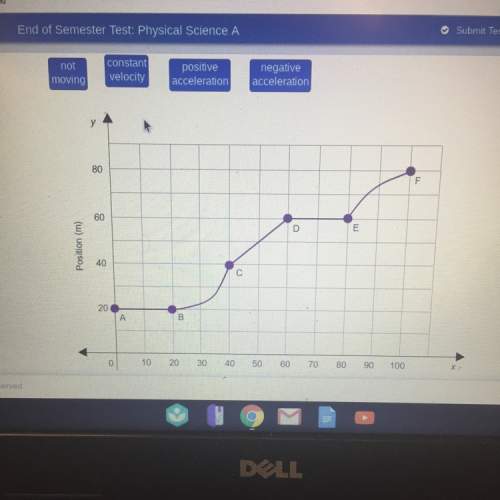
Physics, 29.04.2021 03:40 esmeraldavelez63
You and a friend are playing with a Coke can that you froze so it's solid to demonstrate some ideas of Rotational Physics. First, though, you want to calculate the Rotational Kinetic Energy of the can as it rolls down a sidewalk without slipping. This means it has both linear kinetic energy and rotational kinetic energy. [The freezing only matters because if there is liquid inside, the calculation for the Moment of inertia becomes more complicated]. A Coke can can be modeled as a solid cylinder rotating about its axis through the center of the cylinder. This can has a mass of 0.33 kg and a radius of 3.20 cm. You'll need to look up the equation for the Moment of Inertia in your textbook. It is rotating with a linear velocity of 6.00 meters / second in the counter-clockwise (or positive) direction. You can use this to determine the angular velocity of the can (since it is rolling without slipping). What is the Total Kinetic Energy of the Coke can

Answers: 1


Another question on Physics

Physics, 21.06.2019 18:10
Scientists use laser range-finding to measure the distance to the moon with great accuracy. a brief laser pulse is fired at the moon, then the time interval is measured until the "echo" is seen by a telescope. a laser beam spreads out as it travels because it diffracts through a circular exit as it leaves the laser. in order for the reflected light to be bright enough to detect, the laser spot on the moon must be no more than 1.0 km in diameter. staying within this diameter is accomplished by using a special large-diameter laser. part a if λ = 540nm , what is the minimum diameter of the circular opening from which the laser beam emerges? the earth-moon distance is 384,000 km. express your answer to two significant figures and include the appropriate units.
Answers: 1

Physics, 22.06.2019 03:10
Athin plate moves between two parallel, horizontal, stationary flat surfaces at a constant velocity of v = 7.5 m/s. the two stationary surfaces are spaced 4 cm apart, and the medium between them is filled with oil whose viscosity is 0.9 n·s/m2. the part of the plate immersed in oil at any given time is 2 m long and 0.5 m wide. if the plate moves through the mid-plane between the surfaces, determine the force required to maintain this motion. what would your response be if the plate was 1 cm from the bottom surface (h2) and 3 cm from the top surface (h1)? if the plate moves through the mid-plane between the surfaces, the force required to maintain the motion will be n. if the plate was 1 cm from the bottom surface (h2) and 3 cm from the top (h1) surface, the force required to maintain the motion would be n.
Answers: 2

Physics, 22.06.2019 09:30
Acar drives toward the right over the top of a hill, as shown below. which arrow represents the centripetal acceleration? w x y z
Answers: 3

Physics, 22.06.2019 13:40
Dao makes a table to identify the variables used in the equations for centripetal acceleration. what quantities belong in cells x and y?
Answers: 2
You know the right answer?
You and a friend are playing with a Coke can that you froze so it's solid to demonstrate some ideas...
Questions


Business, 07.02.2021 06:00

Mathematics, 07.02.2021 06:00




Mathematics, 07.02.2021 06:00

Mathematics, 07.02.2021 06:00




Arts, 07.02.2021 06:00


English, 07.02.2021 06:00



English, 07.02.2021 06:00

Mathematics, 07.02.2021 06:00


History, 07.02.2021 06:00




